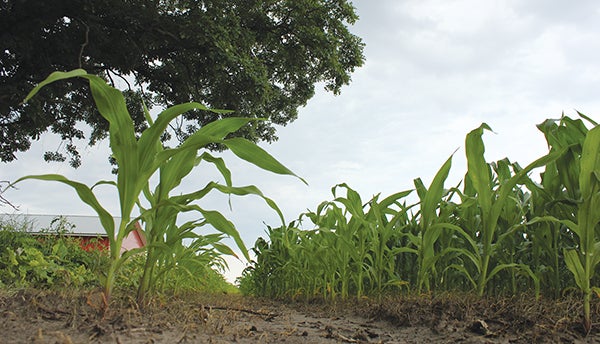Crops emerge, but late and not in all fields
Published 10:11 am Thursday, July 4, 2013

A corn crop east of Grand Meadow stands knee high Wednesday.
Matt Peterson/matt.peterson@austindailyherald.com
Southern Minnesota fields are turning from brown and black to green, but at this point in the year, that’s not saying much. Furthermore, plenty of acres will remain brown this season, except for some free-growing weeds, that is.
That’s the case in some of Joel Nelson’s corn and soybean fields near Lyle. Like many others, he opted for the insurance and left some fields bare, which is referred to as prevented planting. In the fields he did plant, there are bare spots. At least the standing water, an issue throughout the past two months, has subsided.
“It’s starting to dry out now,” Nelson said. “But we’ve got a really inconsistent crop that’s in the field right now, just from all the water that we’ve had.”
While many southeastern Minnesota farmers had excellent crops in 2012 despite severe drought, Nelson and farmers near the Iowa border weren’t as lucky last year, when timely rains consistently avoided them. This year’s conditions have been on the extreme, opposite end of that spectrum.
“I think it has been harder not to do anything than it was to have the crop planted and watch it burn up,” Nelson said about delayed planting and empty fields this year.
Nelson planted beans as late as June 20 this year, the latest he has ever planted, he said. Now he and others are waiting for the heat units — the coveted 86-degree days. Though some corn fields have reached knee-high by the Fourth of July, that antiquated saying doesn’t mean much anymore. On last year’s Fourth, corn was shoulder high and already tasseling. Farmers hope this year’s shortened growing season will extend as far as possible into the fall. An early frost would be detrimental.
“We don’t want an early frost this year; that’s for sure,” Nelson said.
To the north, near Blooming Prairie, Roger Toquam only planted about 50 percent of his corn this year, and 90 percent of his beans. He also opted for crop insurance. Toquam is fully aware of the crop insurance buzz and rumors about getting paid to do nothing. That’s not the case, he said. The topic is a much more complicated financial balancing act. He could’ve switched to beans, but he’d run the risk of crop disease. Toquam, like many others, would much rather have all of his intended crops planted, instead of taking only a percentage of what he could earn.
“It’s like having insurance on your car,” Toquam said. “You have it; you never hope you have to use it.”
Toquam looks at the economy as a whole, too. Without grains, livestock producers, ethanol companies, diesel distributors and others will feel the effect. He’s heard rumors that the localized grain shortage has feedmills and elevators clutching their reserves tightly. Recently, Toquam’s friend couldn’t even buy corn. What’s more, corn is currently selling for roughly a buck less than last year. Corn contracted into next year is dipping more than a dollar less than that, too, into the low $5 range. Nationwide, the corn crop is healthy, and the weak, local crops aren’t significant enough to affect overall prices. Local farmers will have to take what they can get.
Toquam’s father, who farmed since the 1940s, compared this year to 1960, when he planted no crop — and that was an era with no drainage tile. This year’s conditions are extreme.
“After we spent all this money and time and effort with drainage systems, it’s really remarkable that we weren’t able to plant,” Toquam said.
While farmers of a past generation talk about their drought and flood years, 2013 will be a year farmers reminisce about decades from now.





